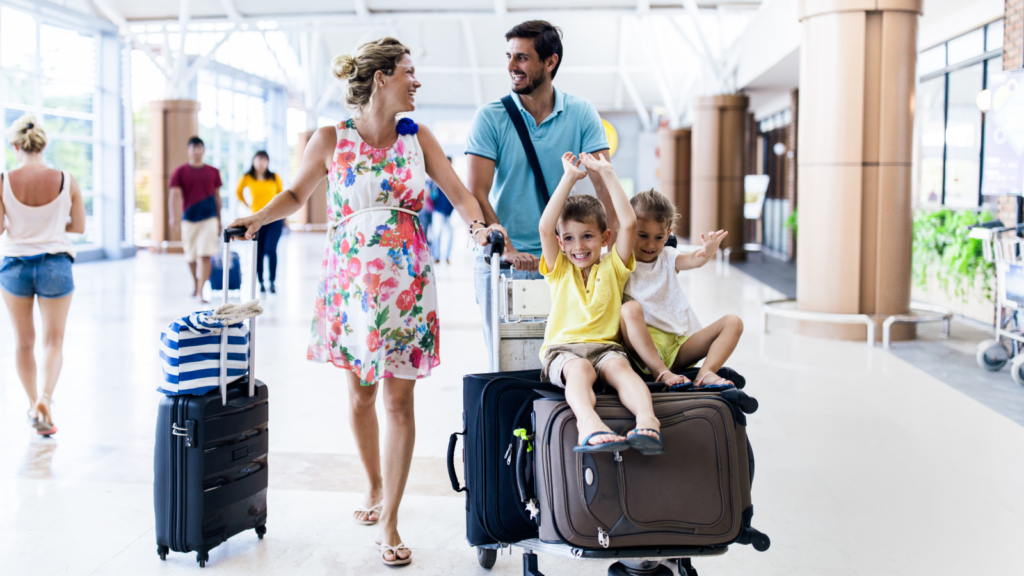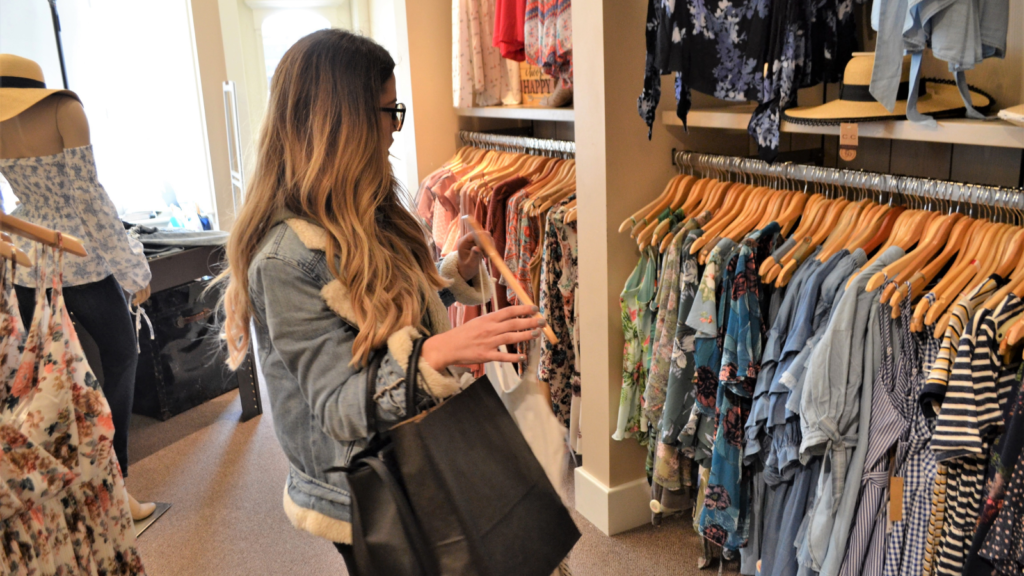The latest consumer behavior trends, according to new market research analyzing consumer foot traffic, transactions, and survey responses.
If there’s one thing we’ve learned over the past few years, it’s that consumer behavior is constantly changing. It was true at the onset of the pandemic, and it’s all the more true today.
Case in point: Throughout much of 2020 and 2021, the COVID-19 pandemic was a top driver of consumer behavior — but that’s shifted in a major way in 2022. This year we’re seeing that now one of the top forces shaping our day-to-day lives is the current economic climate.
The data presented here is from my recent Medallia Market Research webinar on The Biggest Consumer Trends of 2022 (So Far). The findings I shared are based on an analysis of Sense360 by Medallia’s behavioral intelligence and benchmarking technology. Sense360 by Medallia combines billions of consumer data points — including foot traffic, transactions, and survey responses — across millions of individuals to provide brands with real-time, 360-degree insights into consumer behavior, shedding light on both what’s happening and why.
Top 17 Consumer Behavior Trends and Attitudes
COVID-19 is having less of an impact on consumer behavior in 2022
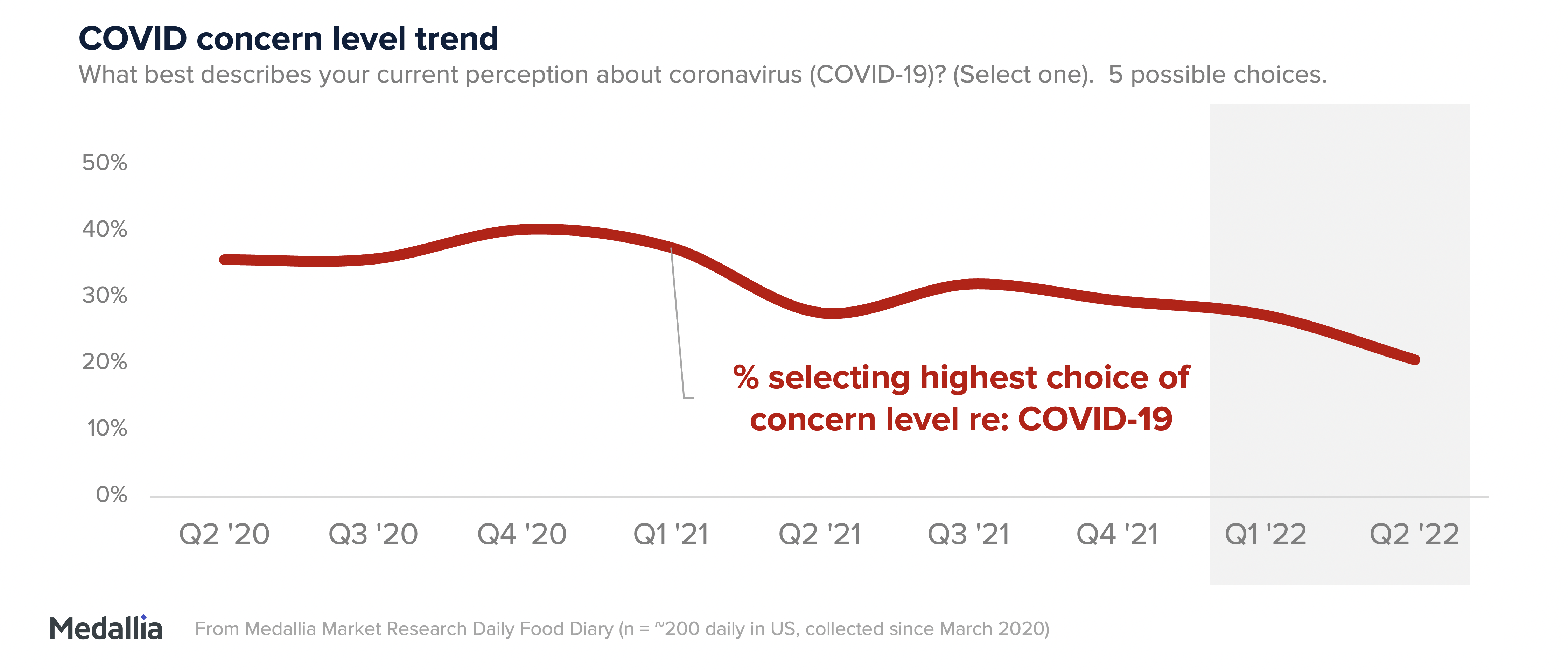
1. Only 1 in 5 consumers are highly concerned about COVID-19 — down over 20 percentage points compared to Q4 2020.
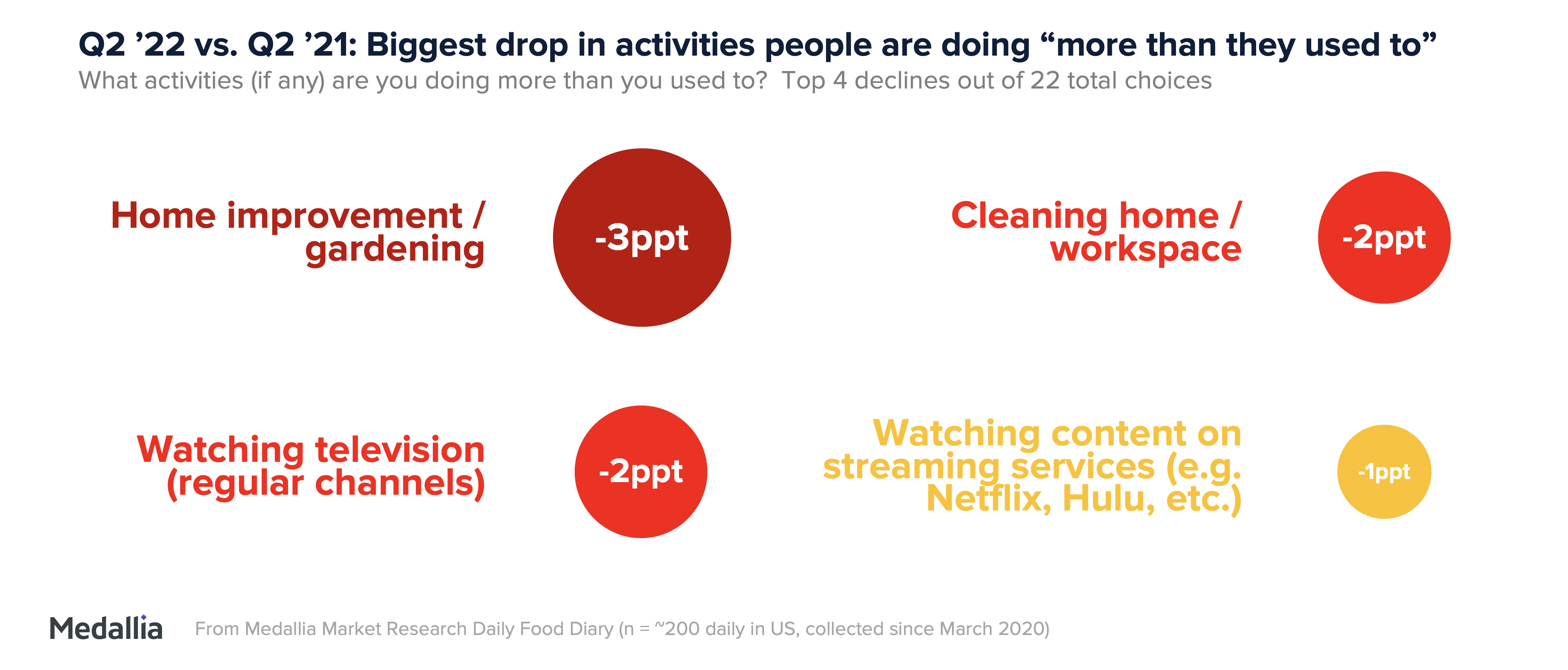
2. Consumers are engaging in at-home activities less often than they did in 2021, possibly due to both cutting back on expenses in general and spending more time away from home.
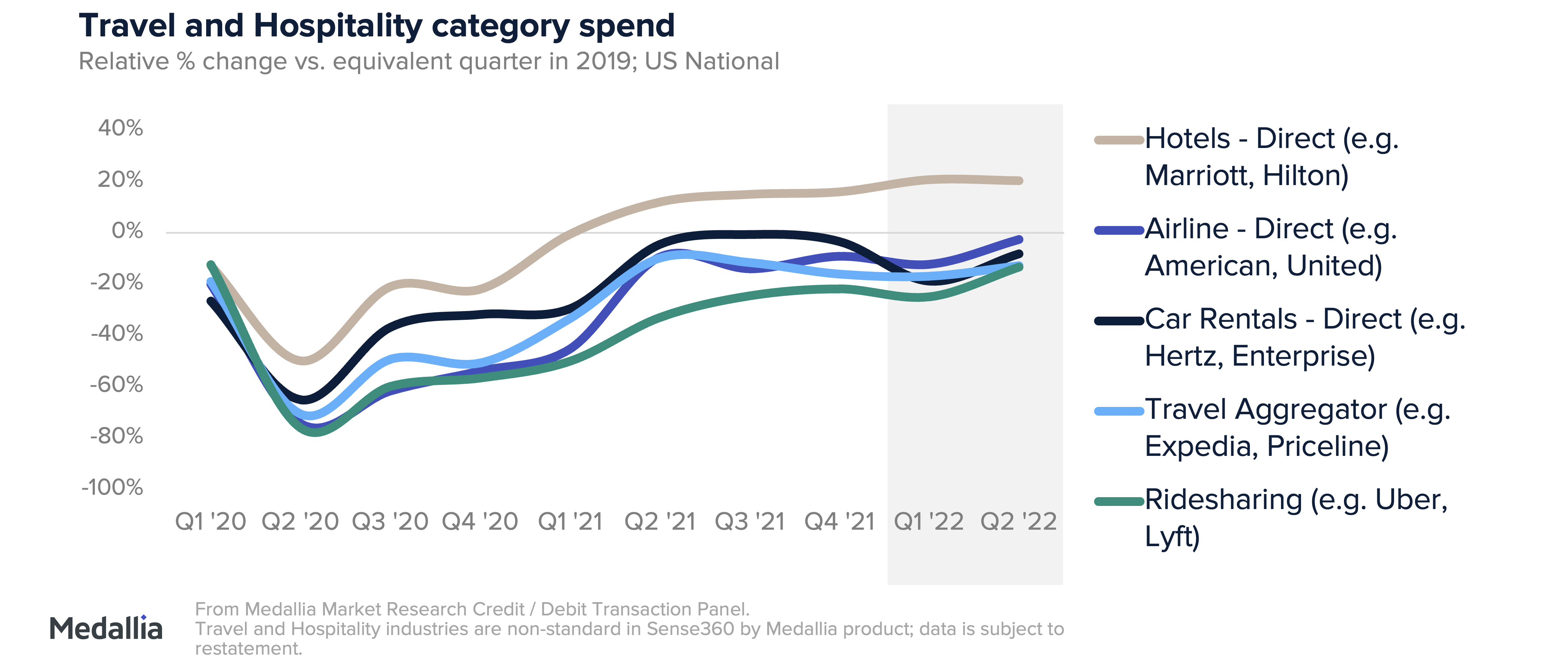
3. Though not all the way back to pre-pandemic levels, travel and hospitality are trending upwards, in spite of rising costs.
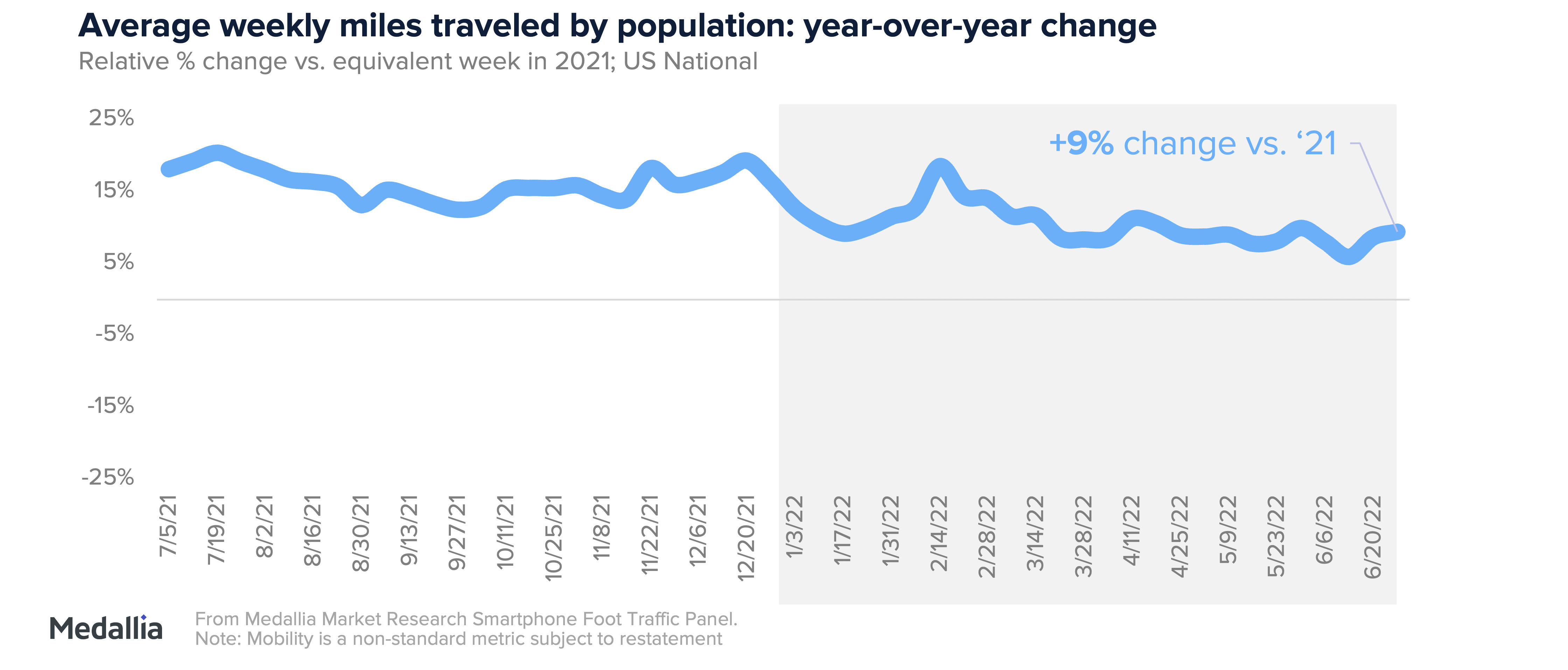
4. People are moving around more than they did in 2021, even with higher gas prices this year, though this trend is decelerating.
Some consumer behavior trends adopted during the pandemic appear to be here to stay
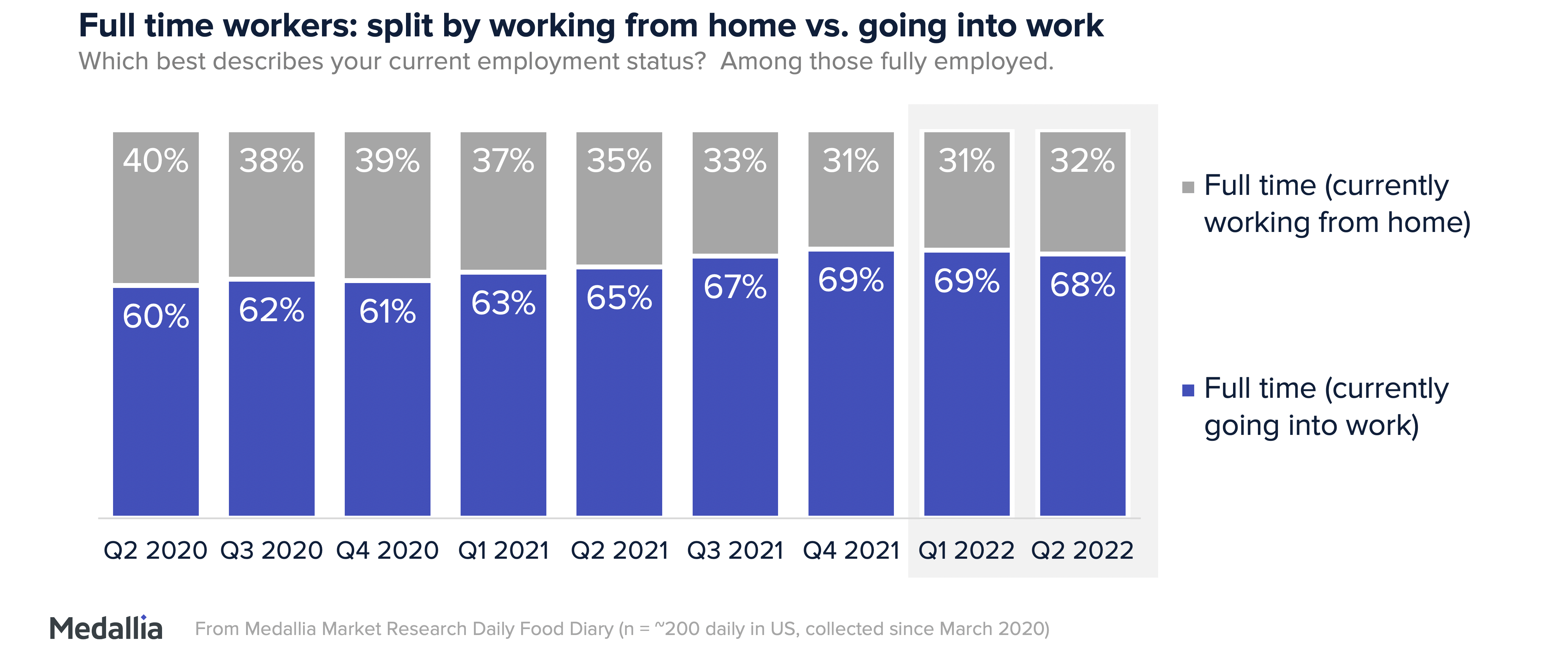
5. After dipping from a high in 2020, the portion of full-time employees working remotely appears to be holding strong at just above 30%.
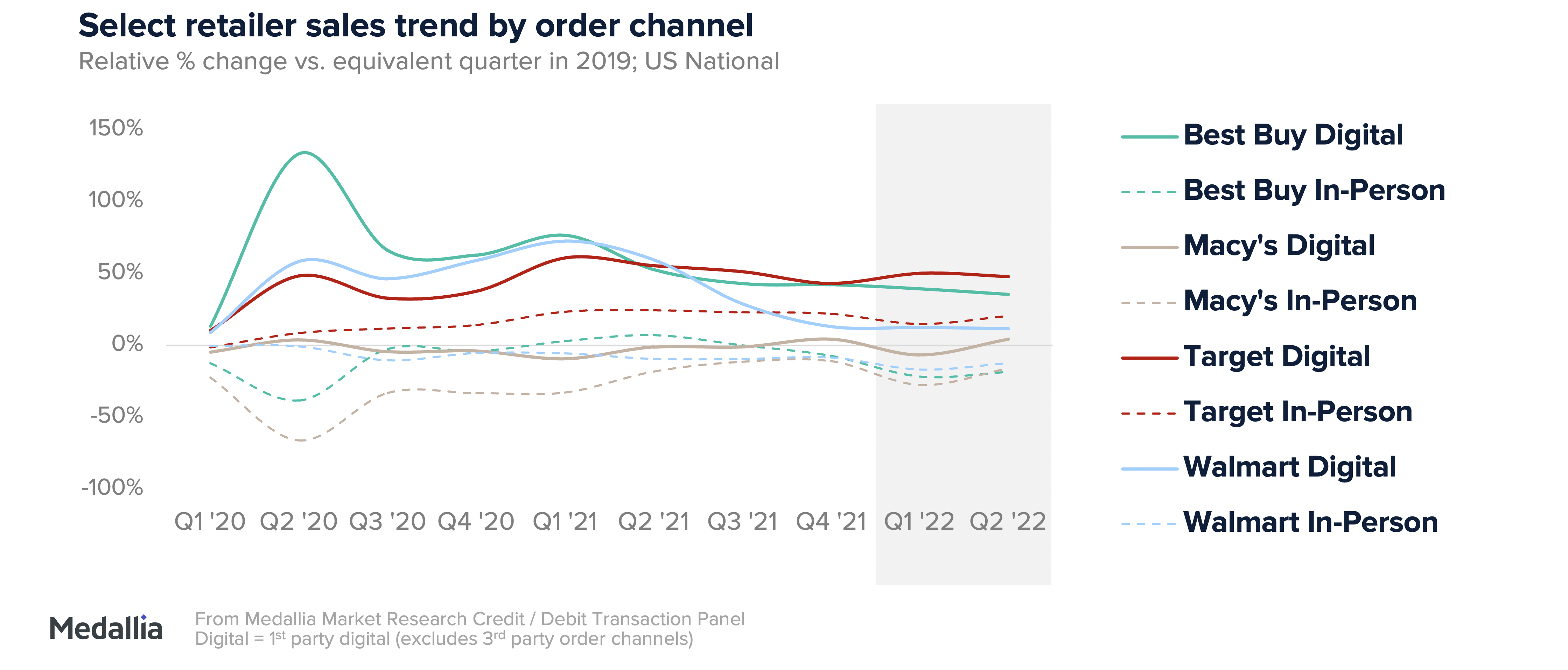
6. Digital channel growth is still outpacing in-person for retail. However, this consumer behavior trend is not even across the board. For instance, Target is sustaining digital sales volumes first seen in 2020 and 2021, whereas Walmart is not to the same extent.
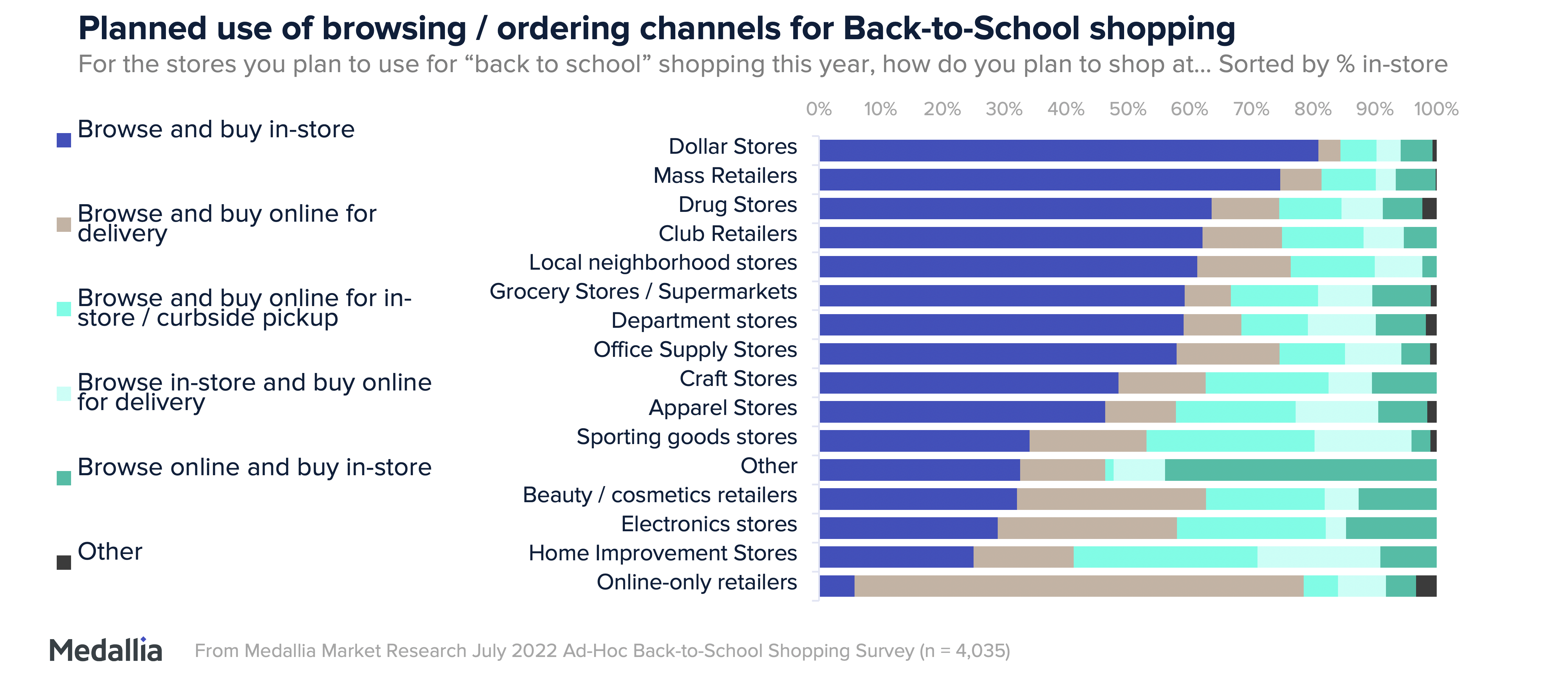
7. Omnichannel shopping journeys are on trend for the 2022 back-to-school season, with consumers planning to use a mix of online and in-person channels for browsing, purchasing, and bringing items home.
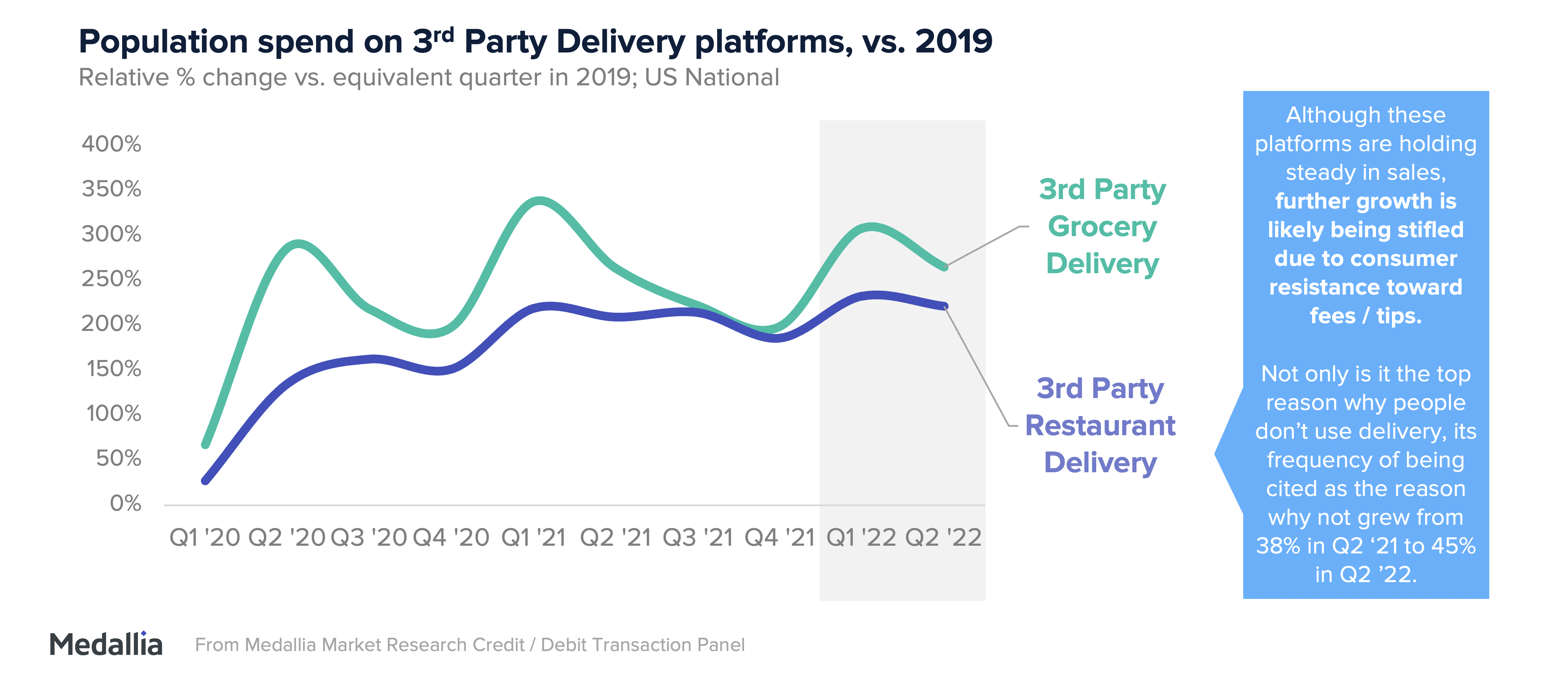
8. People haven’t given up their third-party delivery habit for ordering groceries and restaurant meals.
The top ways the economy is now shaping consumer behavior trends in 2022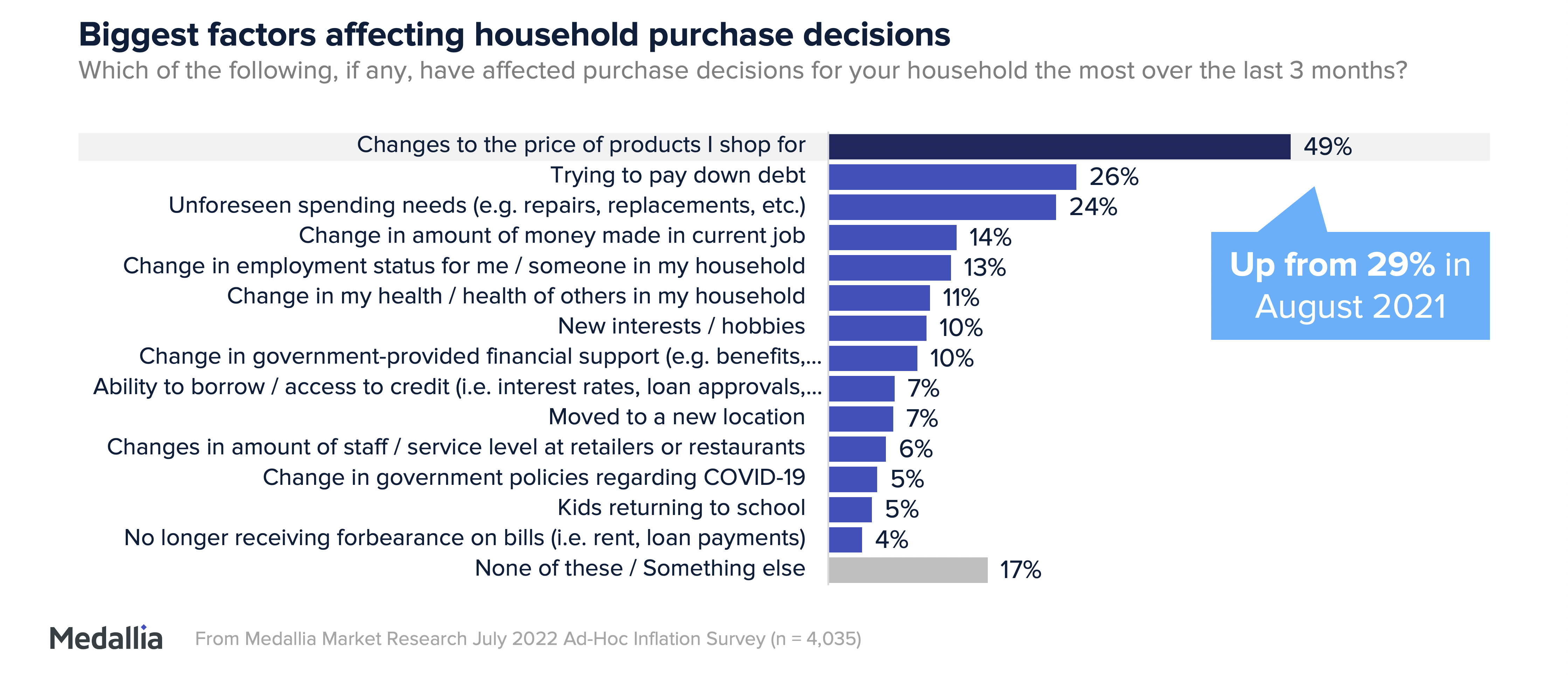
9. Rising prices due to inflation are a top factor influencing household decisions.
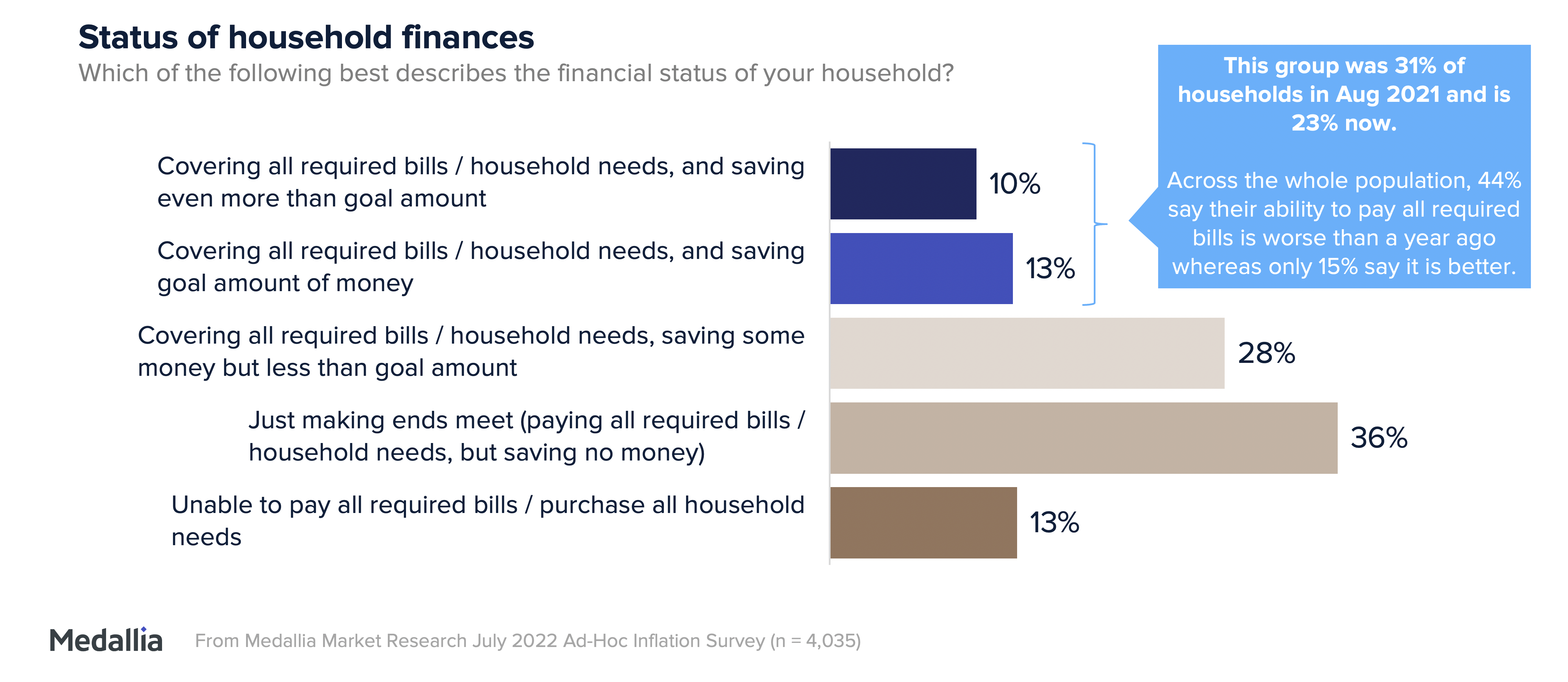
10. Half of households are barely or not able to make ends meet. Only 1 in 4 households say they are covering all of their required bills/household needs, while also staying at or above goal amounts.
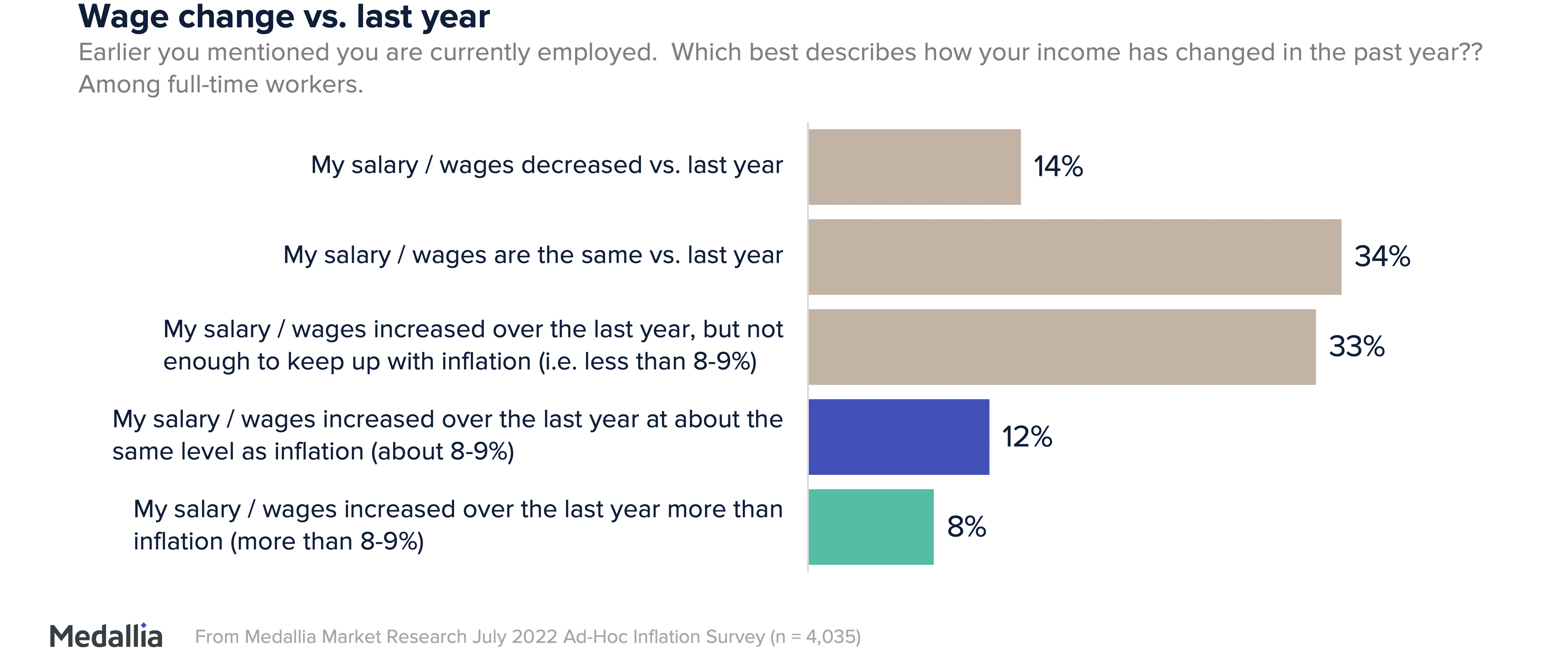
11. Most workers’ wages are not keeping up with inflation. Only 20% say their income has kept up, and roughly half of full-time workers say they’ve received a decrease or stagnant income vs. last year.
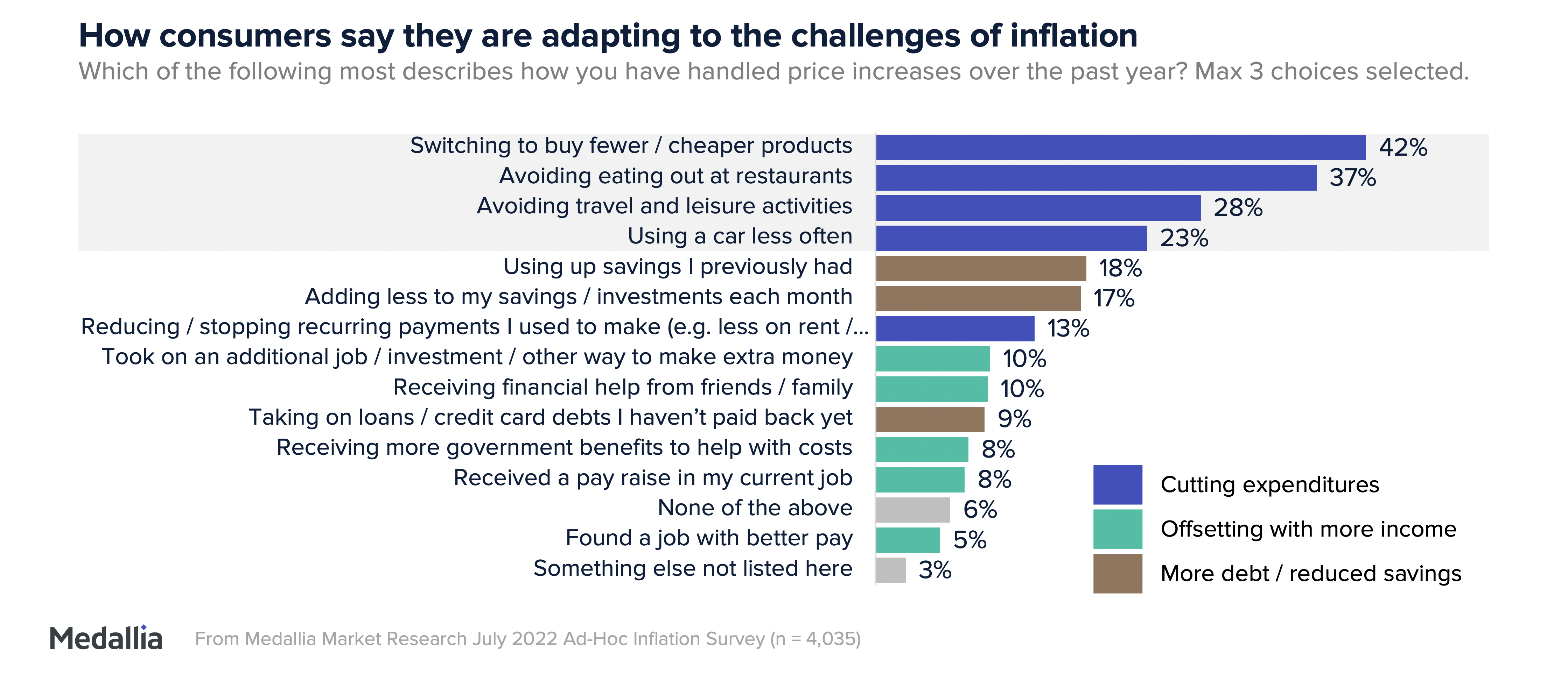
12. The top ways consumers are fighting inflation are by cutting back spending and buying cheaper options.
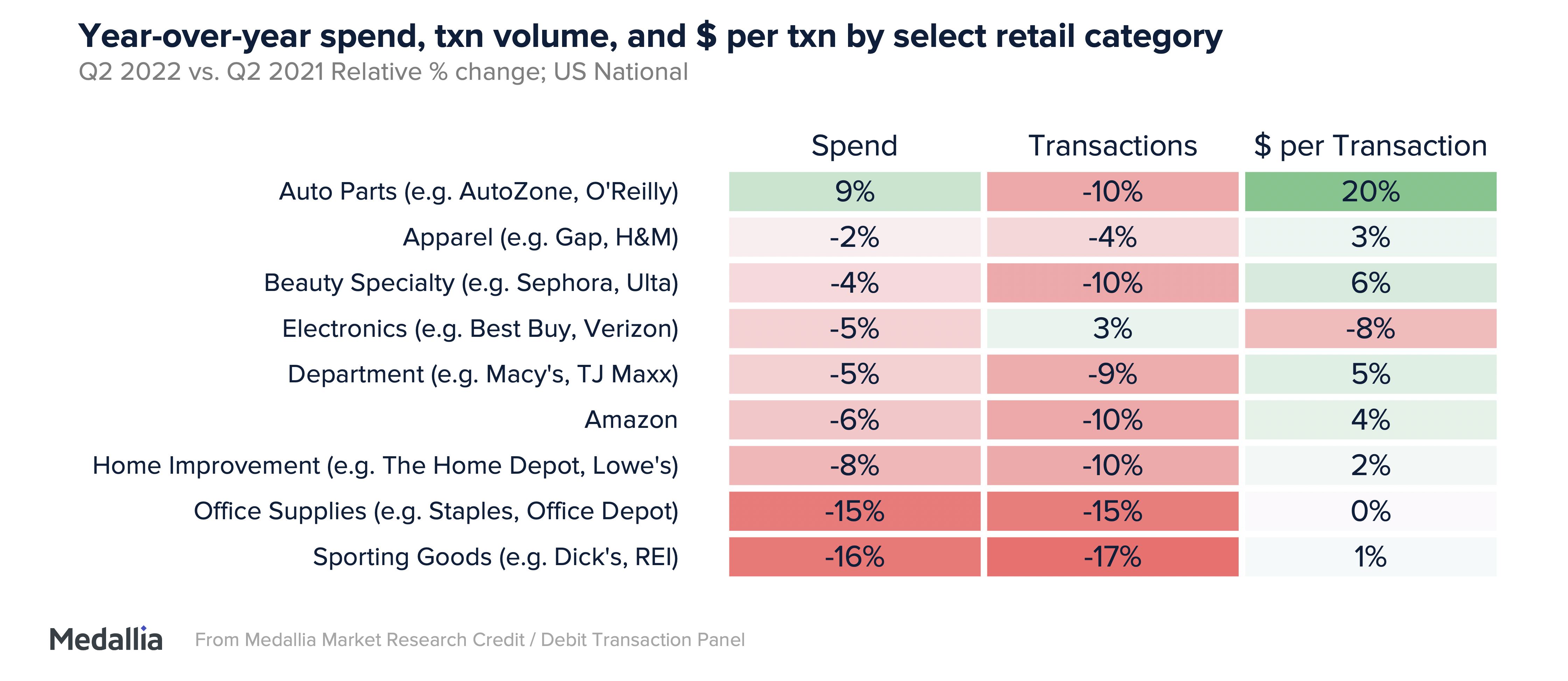
13. Although average order values are up (driven by inflation), sales are sluggish as transactions decline in most retail categories.
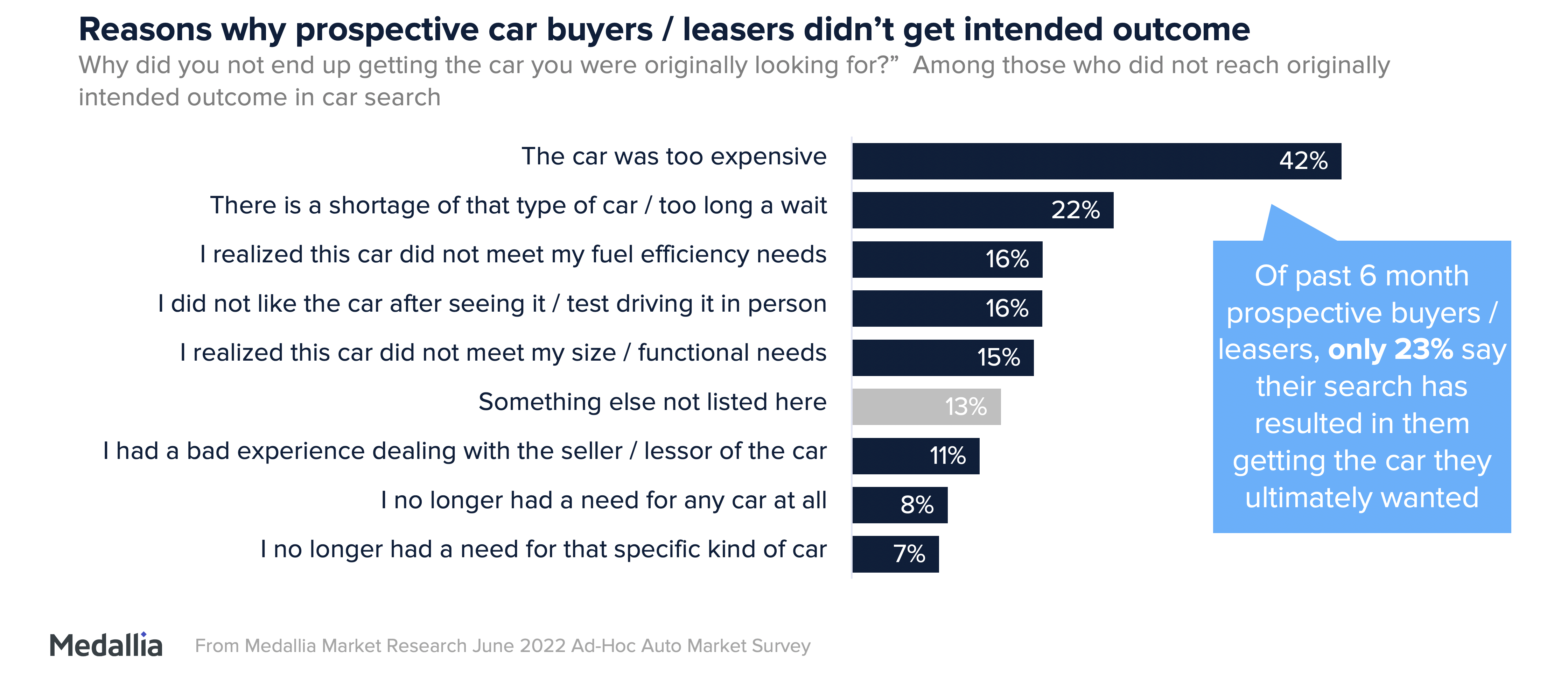
14. Only about 1 in 4 people who have been in the auto market over the past 6 months say their search has resulted in them getting the car they ultimately wanted. Price has been the biggest barrier for the remaining 3 in 4 shoppers.
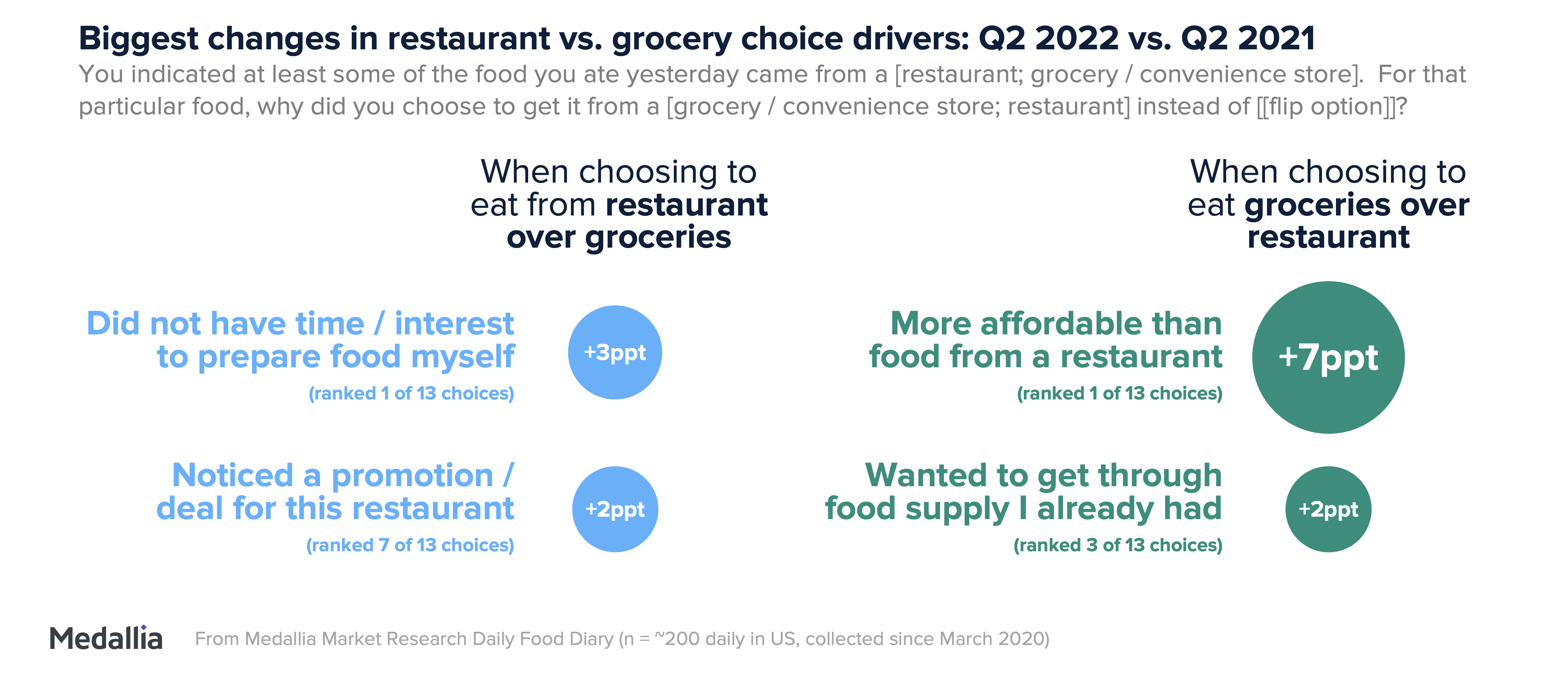
15. The No. 1 reason customers say they’re opting for groceries over restaurant meals is due to affordability reasons. This is up by 7 points this year, compared to in 2021.
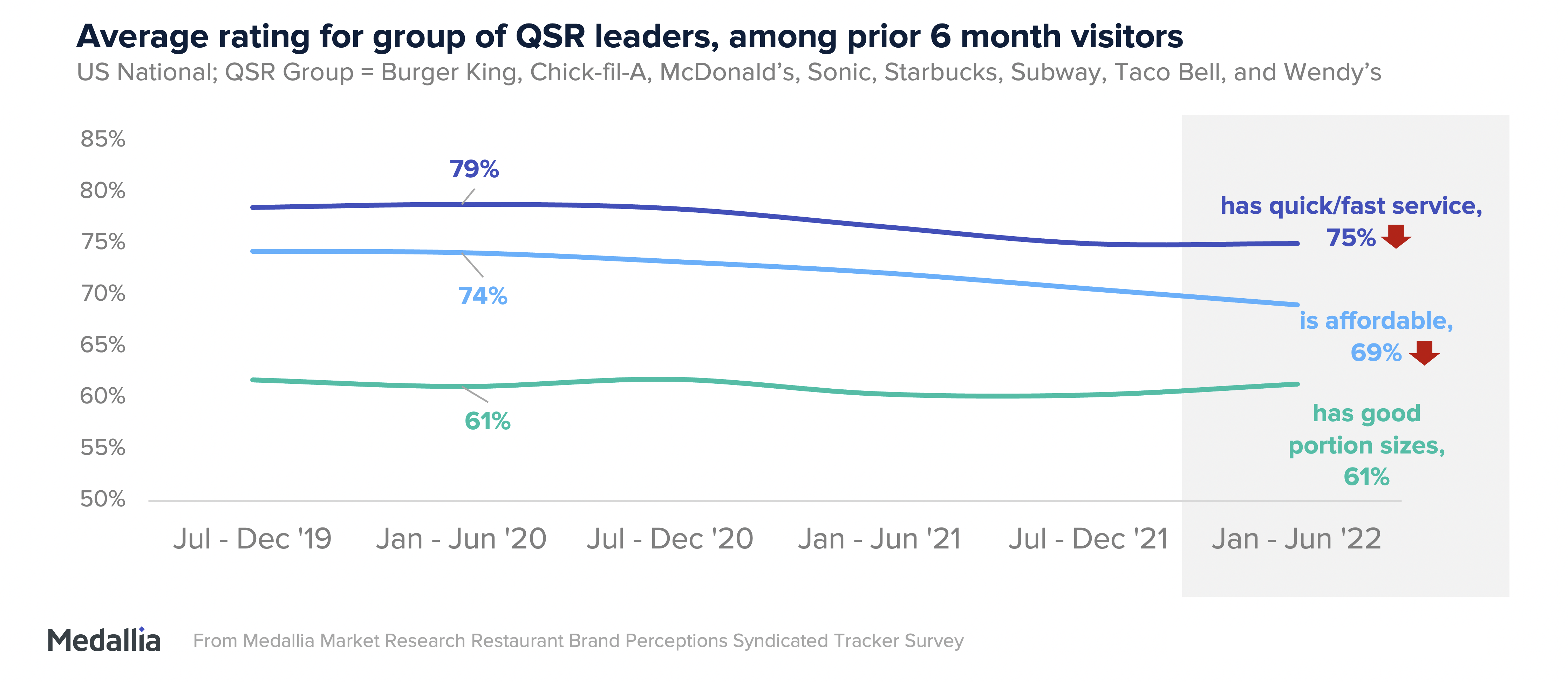
16. Consumers are noticing a drop in service and affordability among quick service restaurants…
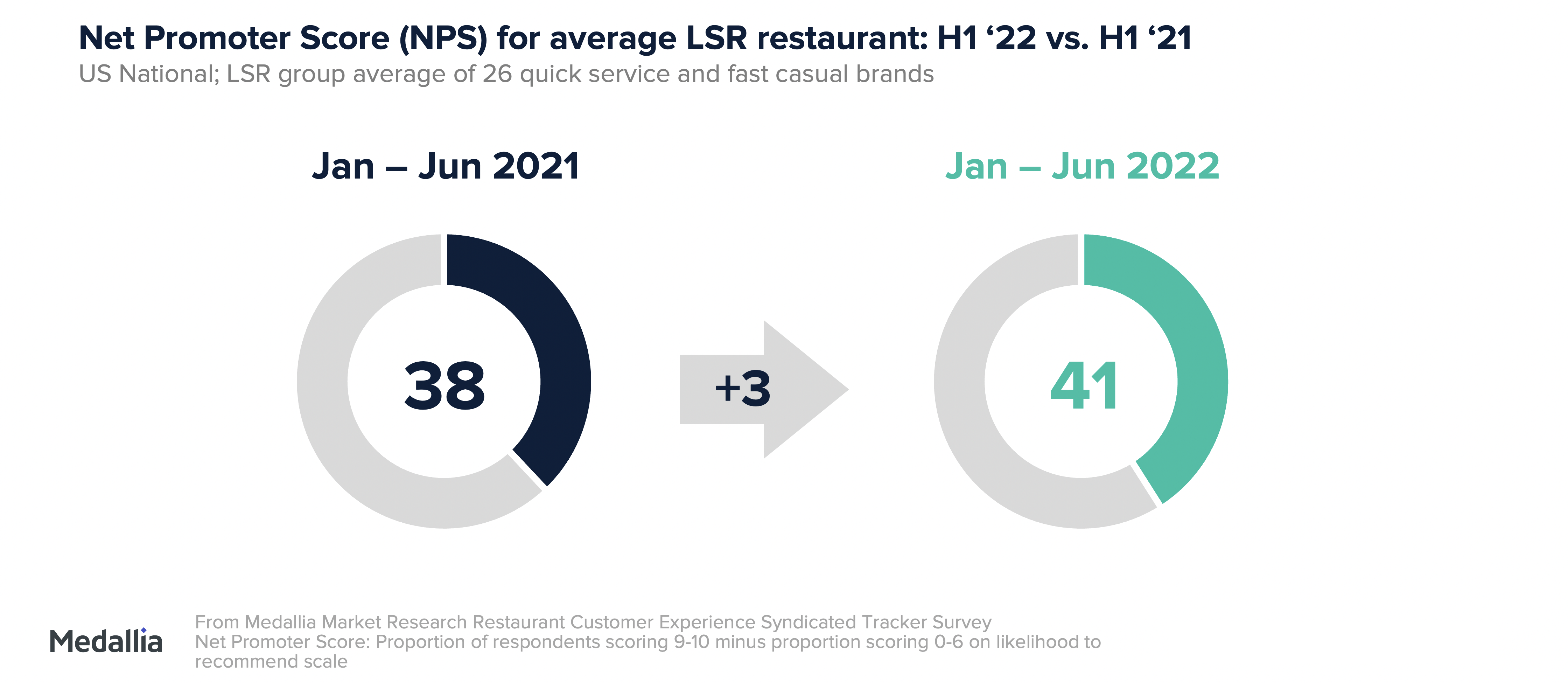
…but NPS® ratings are holding strong.
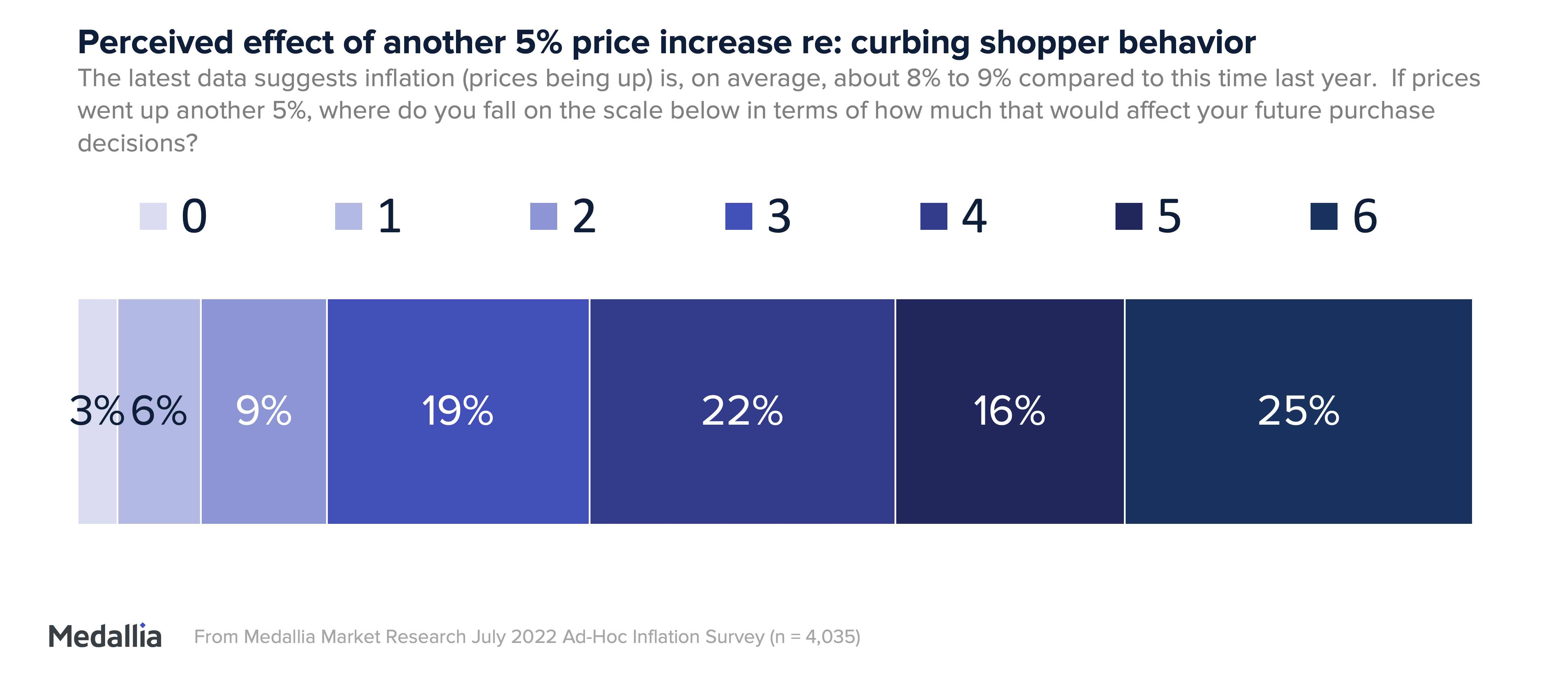
17. If prices continue to go up, all but 3% of consumers say they’ll feel the pinch to some degree. Most (63%) say that on a scale of 0 to 6, another 5% price increase would affect their future purchase decisions moderately (3 out of 6) to greatly (6 out of 6).
Watch the Webinar: The Biggest Consumer Trends of 2022 (So Far)
Inflation is impacting consumer behavior in every industry, and understanding exactly how behaviors have shifted unlocks the opportunity for your brand to adapt. You can’t guess how consumers are feeling and then expect to meet their needs, after all. Understand the consumer behavior trends laid out in our research to plan and act effectively to attract and retain happy customers.
Get support from our team of market research experts, who combine an innovative mix of qualitative and quantitative research methodologies that deliver accurate and actionable insights. Learn more about our market research solutions.

